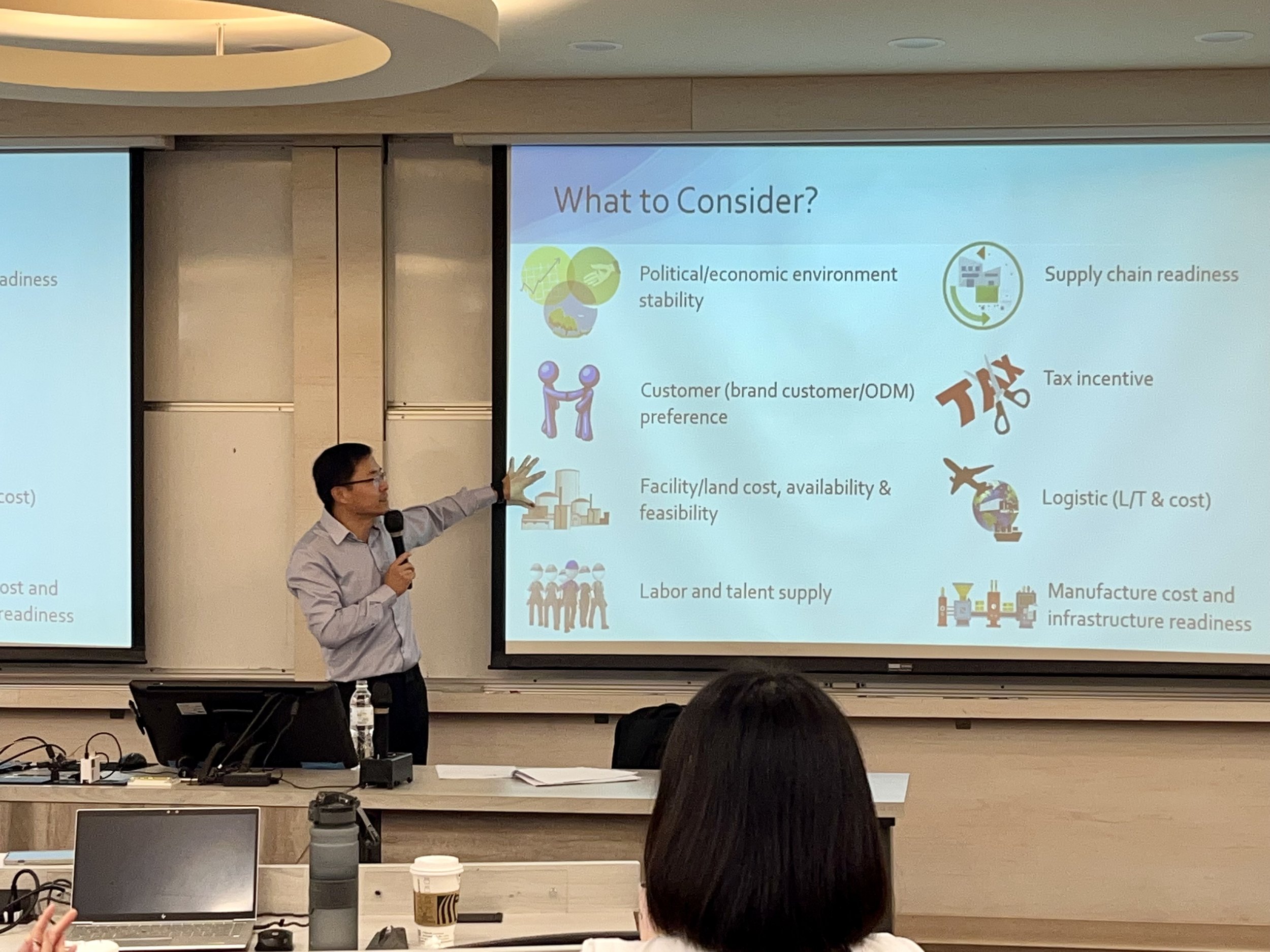Go global? Lessons from Jason Hsu, Primax’s Vice President of Connected Mobility
Jason Hsu, Vice President of Primax’s Connected Mobility Business Unit, recently took the stage to address an audience eager to hear his insights. His speech, centered on the evolution and strategic decisions of Primax Electronic Ltd., promised to provide an in-depth look into the company and the larger business environment.
Primax, established in 1984, initially focused on manufacturing telephone sockets, computer mice, and scanners. Recognizing the potential in cloud technology and the Internet of Things, the company has since embarked on a path of high-quality and innovative development. Over the past two decades, Primax has cultivated a technology partnership with Qualcomm, enriching its business perspective with new insights and customer feedback. Commenting on this journey, Mr. Hsu said, “Nothing comes with ease,” a reflection of the complexities and challenges in the evolving business landscape.
Mr. Hsu then turned to discuss the impact of the US-China trade war on global commerce, especially on companies integral to supply chains. He used practical examples to shed light on the challenges and strategic considerations for companies looking to expand into international markets, thereby enhancing the audience’s understanding of the current dynamics in global trade.
A significant repercussion of these trade tensions is the dilemma many companies face: whether to maintain or relocate their manufacturing facilities to other countries. Primax is confronted with this decision as well. Mr. Hsu elaborated, “Selecting the right place for relocation is a multifaceted decision.” He exemplified this by questioning whether relocating a manufacturing plant to Thailand, considering the increased costs of electricity and infrastructure readiness, would be offset by the government's tax incentives. “Each decision involves evaluating factors such as the availability of talents, manufacturing costs, infrastructure readiness, tax incentives, and cultural compatibility,” Mr. Hsu stated. These decisions require comprehensive analysis, considering both internal factors and the broader network of downstream and upstream partners.
International Management Challenges
McKinsey Pyramid Principle
Mr. Hsu then introduced the audience to the McKinsey Pyramid Principle offering insights into effective communication. “People’s attention spans are notoriously short,” he stated. “In most meetings, we don’t have much time to absorb vast amounts of information and insights gathered to solve complex problems.” The Pyramid Principle allows us to communicate our ideas clearly and effectively
The audience was first given a brief introduction to the pyramid structure, and then they were divided into groups for practical exercises. These exercises consisted of three tasks: memorizing random items, rescheduling meetings due to urgent conflicts, and restructuring a paragraph of content.
“The pyramid structure has fundamentally changed my approach to thinking," shared one student, highlighting the valuable skills they gained in content organization. Another student expanded on this, noting, “The pyramid structure's application extends beyond presentations; it's equally effective for data organization, project management, and studying.” Mr. Hsu emphasized the effectiveness of starting a presentation with the conclusion, allowing the listener to immediately grasp the main points and understand how subsequent information supports these points, thereby solidifying the argument.
Mr. Hsu's discussion offered the audience fresh insights into problem-solving and effective communication strategies. His teachings are poised to be an invaluable guide for those tackling the challenges of the global market and stepping into professional environments.








